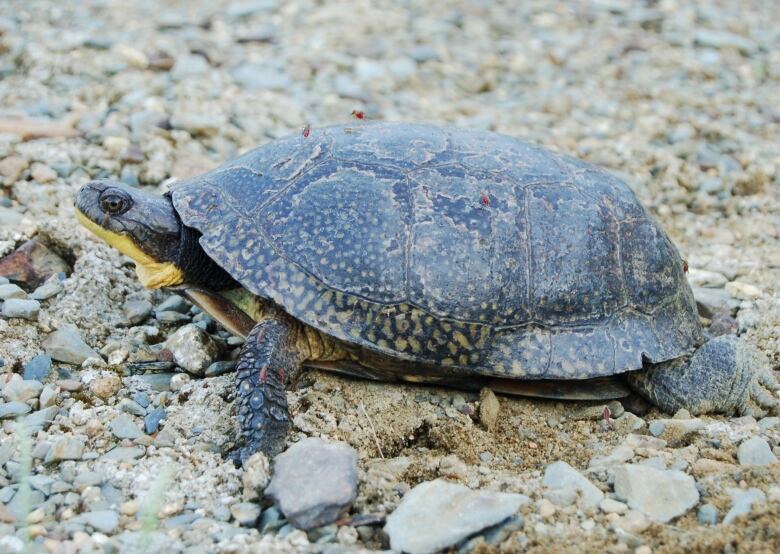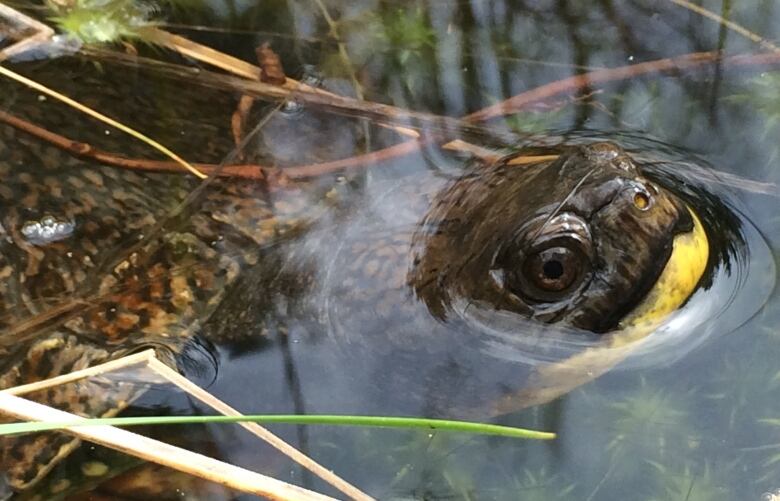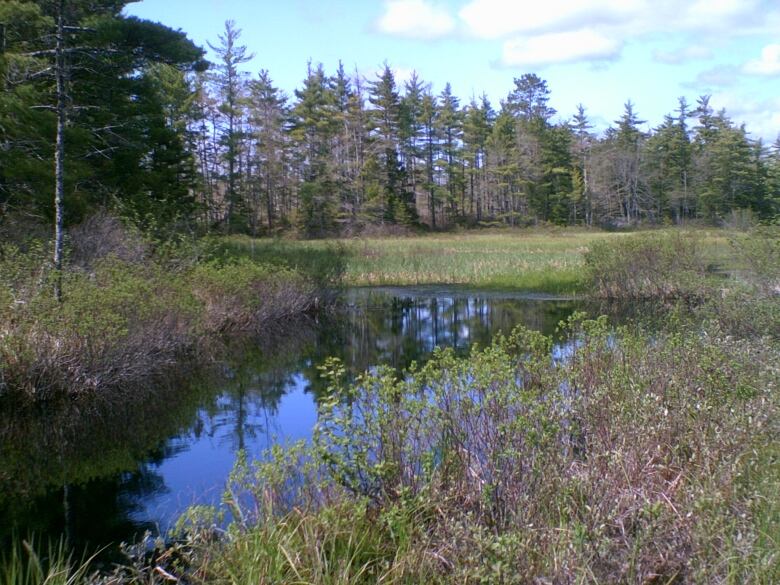New population of Blanding's turtles discovered in Nova Scotia
Endangered turtles discovered near Kejimkujik National Park

Volunteers at the Mersey Tobeatic Research Institute (MTRI) are celebrating their most recent discovery:a new population of endangered Blanding's turtles in southern Nova Scotia near Kejimkujik National Park.
The group, along with various local conservationists, have been monitoring the area's turtle populations since 1987. The latest discovery represents the fourth known population of Blanding's turtles in Nova Scotia.
Itcould include anywhere between 100 and200 adults.

Tom Herman is on the institute'sboard of directorsand has co-chaired a Blanding's turtle recovery team since 1993. He calls this latest discovery of turtles, which are geographically separated from any known others, "extraordinary."
"Until last fall, we were aware of three populations in Nova Scotia," he told CBC Radio'sMainstreetin Halifax. "So this additional population is a significant find."
Finding turtles 'painstakingly slow work'
The knowledge of a fourth population first came to MTRI's attention after a local fisherman reported sightings of Blanding's turtles last fall.
MTRI volunteers began searching the waterways this spring, using radio transmitters and GPS technology, to identify and monitor adult Blanding's turtles.

Herman credits "hardcore" MTRI volunteers like Harold and Diane Clapp, who discovered nearly all of the Blanding's turtles in the newlyestablished population. "It's painstakingly slow work, it's an acquired taste, but we've benefited from having an enormous body of volunteers," he says.
MTRI have identified 31 adults to date, which Herman says is a significant number after only a few months of looking.

"To find that many turtles that quickly, it means this is a considerable population," he says.
"Sometimes it's right under our noses, but it's not for a lack of looking"
Long lives,hard challenges
Blanding's turtles are one of the four species of turtle found in Nova Scotia, and are by far the most endangered. Herman says roadside accidents and the vulnerability of turtle eggs to heat and raccoons are the biggest threats to Blanding's turtles.
However, he adds that the unique life cycles of Blanding'sturtlesalso present conservation challenges.

"Blanding's take 20 years to mature, which means they have to survive that long before they can reproduce," he says.
After that, Herman says the turtles can then mate, procreate and live up to 70 years or more. "They're capable of breeding, and in fact get more fertile, into old age," he says.
But with long lifespans, Blanding's are severely vulnerable to changes in their habitat.

"Blanding's make complicated maps in their heads of nesting sites, and will use [them] over decades," Herman said. When human activity interferes with their habitat, such as building roads across their "mind maps,"the turtles' reproductive cycles and population survival can be harshly affected.
However, the institute'slatest discovery gives Herman hope: "It's good newsand we're cautiously optimistic. Stay tuned."












_(720p).jpg)


 OFFICIAL HD MUSIC VIDEO.jpg)
.jpg)



























































































